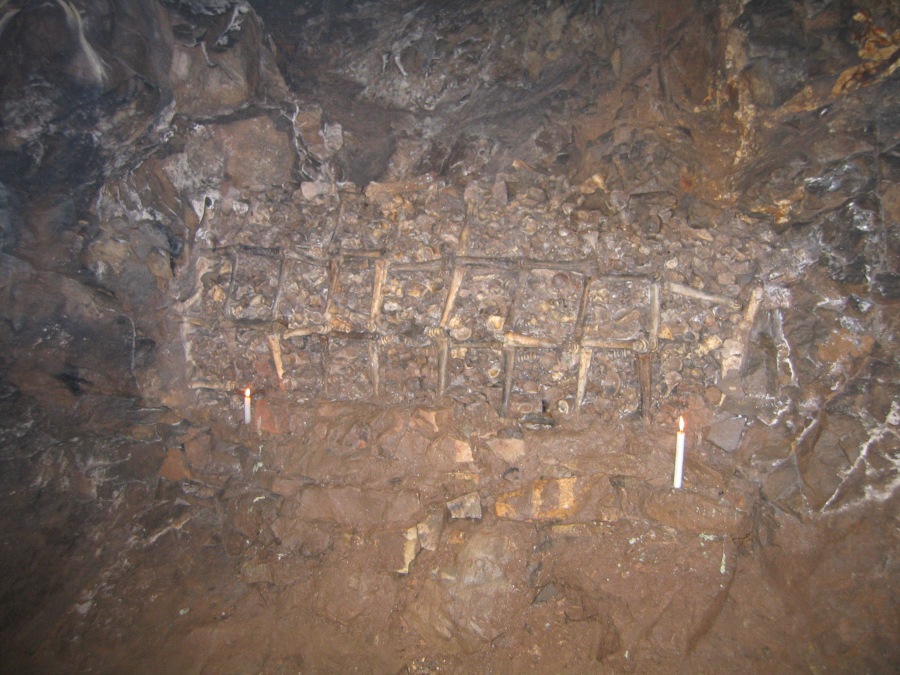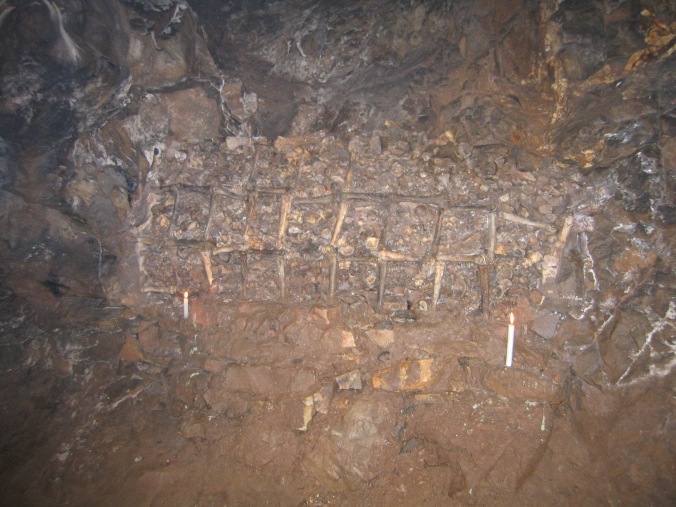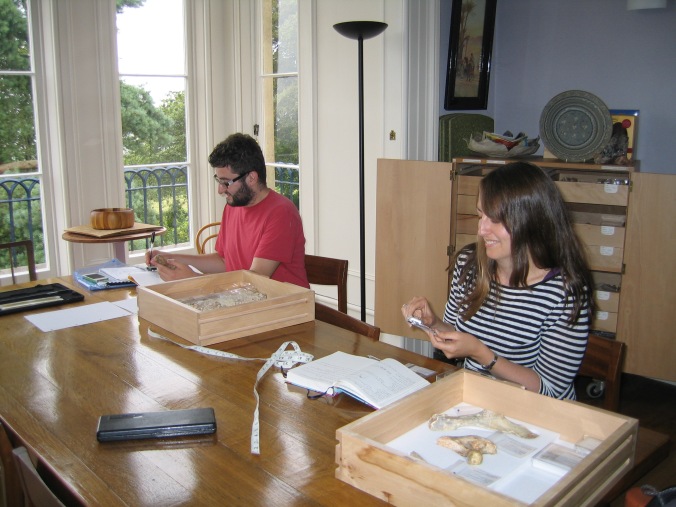by Danielle Schreve (Professor of Quaternary Science)
It’s not every day that you get to visit a Site of Special Scientific Interest that once formed the centrepiece of a 19th century “theme park” on the Biblical Deluge but that’s exactly what Danielle Schreve, Lucy Flower (PhD student) and Dave Arnold (MSc Quaternary Science student) did, on a recent visit to Banwell Bone Cave in north Somerset.
The site was discovered in 1824 and subsequently excavated by local farmer and antiquarian, William Beard. The deposits were so full of bones that the cave was reportedly filled almost to the roof with the remains of reindeer and bison, enormous brown bear, wolf, wolverine and arctic fox. The assemblage was designated by Andy Currant and the late Roger Jacobi as the type fauna for the Banwell Bone Cave Mammal Assemblage-Zone of the Early Devensian (Marine Oxygen Isotope subStage 5a, around 80,000 years ago), a low-diversity, cold-climate fauna dating to the early part of the last ice age. So rich were the remains that Beard took to stacking some of the commoner bones around the walls; he was further encouraged by George Law, the Bishop of Bath and Wells who owned the land, to develop the site as a visitor attraction, explaining the accumulations of bone according to the prevailing theological interpretation of the time, as the product of the Biblical Flood,.
After emerging from the cave, Dave and Lucy were able to study some of the remains housed on site. Dave is working on the entire Banwell assemblage for his dissertation, including unpublished material from the most recent excavations in 2007, whereas Lucy has a particular interest in wolves, the subject of her recent PhD. The Banwell wolves all have very worn teeth but are not particularly old individuals – Lucy’s paper (Flower and Schreve 2014 in Quaternary Science Reviews) suggests that these animals may have been consuming frozen carcasses or even moving into a bone-crunching niche in the absence of spotted hyaenas in Britain at this time. A big thank you to the owners, Yvonne and Ron Sargeant and John Haynes, for allowing us to visit and study the material in their care.



